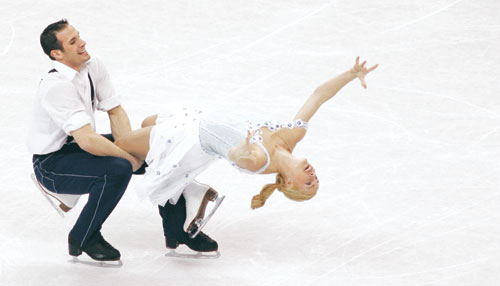
By mid-afternoon, he is behind the wheel of the Beemer again, driving to the same rink at the Robert Morris University Island Sports Center. He practices and teaches younger skaters until 5:30 p.m. “Then,” he says, “I go back to school, pass out in my car for two hours, and go back to the computer lounge.”
Rodgers-Fischl is a junior at Carnegie Mellon double-majoring in biomedical and chemical engineering. He is also a highly touted ice dancer. On days like these, when a competition is looming, it’s not easy to figure out whether he’s more student or skater. And, if that combination isn’t enough to crowd his schedule, he also is a member of the ROTC, which helps him pay for his education. Between the skating and corps training, he’s up before dawn most days.
His first time on skates was as a hockey player at age five, but he says, “I had more fun jumping around than listening to the rules,” so his coaches transitioned him to ice skating. He started off with freestyle, but by the time he reached the junior level, he got into ice dancing. He and his partner parted when it came time for college. “I was basically ready to quit,” he says. The break didn’t last long. “After a semester, I wanted to go back.”
When he returned to the rink, he was introduced to Marsha Snyder, the synchronized skating coach at Robert Morris University. The two decided to partner—with Snyder lending him her parents’ BMW so he could get to and from practice.
“We were able to get together and in one year worked so hard that we could compete against Olympic and world competitors,” says Rodgers-Fischl. They qualified for this year’s U.S. Figure Skating National Senior Ice Dancing Championships by placing second at the eastern sectionals. They didn’t win, but “we gave them a run for the money.”
Somehow, Rodgers-Fischl has made skating, ROTC, and a double major doable at the same time.
He even found an interesting parallel between his academics and ice skating. “The problem-solving process is about the same; you try to break things down into smaller pieces in both disciplines. You test and test and test… You tweak it about. It works either on the ice or in engineering.”



